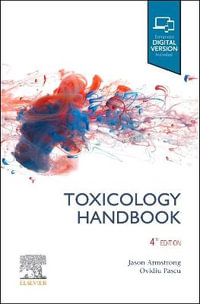| List of Contributors | p. IX |
| Preface | p. XI |
| The Practical Applicability of Toxicokinetic Models in the Risk Assessment of Chemicals | p. 1 |
| Introduction | p. 1 |
| Underlying Principles of Toxicokinetic Models | p. 1 |
| Lack of Data | p. 2 |
| Use of Structure-Activity Relationships (SARs) | p. 2 |
| Standard Tests versus Compound-Specific studies | p. 3 |
| Application of Toxicokinetic Data in Hazard Identification | p. 4 |
| References | p. 5 |
| Physiologically Based Pharmacokinetic Modeling of the Glycol Ether, 2-Butoxethanol, and Its Application in Human Health Risk Assessments and Exposure Guidelines | p. 7 |
| Introduction | p. 7 |
| Exposure Guidelines Using Traditional Approaches | p. 10 |
| Rationale for the Development of a PBPK Model for BE | p. 13 |
| Development of a Rat and Human PBPK model for BE and BAA | p. 15 |
| Use of PBPK model in Risk Assessments | p. 27 |
| Conclusions | p. 35 |
| Acknowledgments | p. 36 |
| References | p. 36 |
| Application of Pharmacokinetic Modelling to Biological Monitoring | p. 41 |
| Introduction | p. 41 |
| Biological Monitoring | p. 42 |
| Description of the Pharmacokinetic Models used | p. 43 |
| Case Studies | p. 45 |
| Tetrahydrofuranet | p. 45 |
| Formic Acid after Methyl Formate or Methanol Exposure | p. 48 |
| Comments and Conclusion | p. 50 |
| References | p. 52 |
| Dermal Absorption from Pesticide Residues Data Analysis | p. 55 |
| Introduction | p. 55 |
| Background | p. 56 |
| The Zendzian Protocol | p. 60 |
| Results and discussion | p. 61 |
| Conclusions | p. 76 |
| References | p. 78 |
| Inter-Species Pharmacokinetic Comparison of Organic Acid Herbicides. Is the Dog a Relevant Species for Evaluation of Human Health Risk? | p. 79 |
| Background | p. 80 |
| Toxicology Background | p. 81 |
| Hypothesis | p. 82 |
| Approach | p. 83 |
| How are organic acids cleared in the kidney of dogs and excreted in the urine? | p. 89 |
| Are renal functional changes a toxicological response or a physiological adaptation associated with the excretion of organic acids? | p. 93 |
| What potential mechanism(s) may be responsible for the reduced elimination of organic acids in the dog? | p. 97 |
| Is the dog toxicity data obtained with either triclopyr or 2,4-D of any relevance for the extrapolation of human health risk? | p. 99 |
| Regulatory Outcomes | p. 100 |
| Utility of Comparative Pharmacokinetics | p. 103 |
| Summary & Conclusions | p. 104 |
| References | p. 104 |
| Modeling the Uptake and Disposition of Hydrophobic Organic Chemicals in Fish Using a Physiologically Based Approach | p. 109 |
| Development of PBTK Models for Fish | p. 109 |
| Branchial Efflux of Organic Chemicals | p. 111 |
| Erickson-McKim Gill Models | p. 111 |
| Empirical Relationship Between Log PBW and Log KOW | p. 112 |
| Chemical Distribution between Blood and Tissues | p. 115 |
| Equilibrium Tissue:Blood Partitioning | p. 115 |
| Flow vs. Diffusion Limitations | p. 116 |
| PBTK Models for Fish | p. 117 |
| TCDD Model | p. 117 |
| TCB Model | p. 122 |
| Discussion | p. 128 |
| References | p. 131 |
| Chair's Introduction to the Second Symposium Day | p. 135 |
| Introduction | p. 135 |
| Cancer risk assessment of azo dyes and aromatic amines from garment and footwear (Speijers et al, 1996; Zeilmaker et al. 1999) | p. 136 |
| Calculation of human toxicity thresholds for TCDD (Zeilmaker and Van Eijkeren, 1998) | p. 137 |
| PBPK simulated adduct formation as a result of benzopyrene administration (Zeilmaker et al, 1997-1999) | p. 137 |
| Model for estimating lipophilic contaminants in cattle (Freijer et al, 1999) | p. 138 |
| Last, but certainly not at least, the modelling of consumer exposure (Van Veen et al, 1994-now) | p. 138 |
| Can Biologically Based Models of Carcinogenesis Be Used for Risk Assessment? Potentials and Limitations of Carcinogenesis Models | p. 141 |
| Introduction | p. 141 |
| Models of carcinogenesis | p. 142 |
| Quantitative risk assessment with multistage models | p. 147 |
| Summary | p. 151 |
| References | p. 151 |
| The Prediction of Systemic Toxicity by Integrating the Results of Biokinetic Models and Biologically Based in Vitro Test Methods | p. 155 |
| Introduction | p. 156 |
| Integration of kinetic and dynamic data to estimate systemic toxicity | p. 160 |
| Biokinetic modelling | p. 163 |
| In vitro and other non-animal studies for obtaining compound-specific parameters for the use in PB-BK models | p. 164 |
| Toxicity test batteries: in vitro approaches | p. 168 |
| Results of the ECITTS project | p. 169 |
| Discussion | p. 177 |
| Kinetics | p. 177 |
| Dynamics | p. 182 |
| Conclusions from the ECITTS study | p. 185 |
| A generic scheme for evaluating chemical toxicity | p. 185 |
| Concluding remarks | p. 188 |
| References | p. 189 |
| Table of Contents provided by Syndetics. All Rights Reserved. |
























